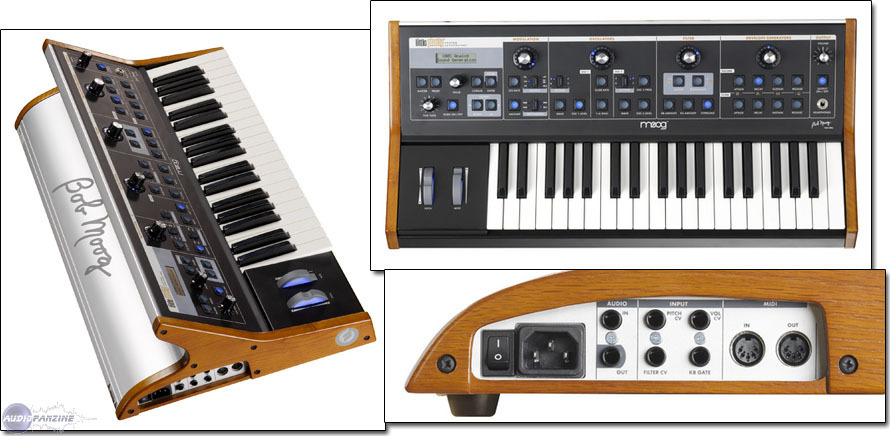Sujet Pour ceux qui ne peuvent pas attendre jusqu'au 29 mars.
- 6 réponses
- 6 participants
- 708 vues
- 6 followers
firemongers
C'est un synthé analogue monophonique (avec Audio In en sus)
Citation : The "***" is a monophonic analog synthesizer, with 100 user editable presets.
Synth Engine:
Sound Sources are two ultra-stable analog VCOs. Parameters for the VCOs are:
- Osc. 1 Octave: 16’, 8’, 4’, 2’
- Osc. 1 Wave: Continuously variable from triangle through saw and square to skinny pulse.
- Osc. 1 Level
- Glide Rate
- Osc. 1 2 Sync On/Off
- Osc. 2 Frequency
- Osc. 2 Octave: 16’, 8’, 4’, 2’
- Osc. 2 Wave: Continuously variable from triangle through saw and square to skinny pulse.
- Osc. 2 Level
- Fine Tune (for both Oscillators, located at the bottom left of the panel)
Sound Modifiers include a single VCLPF: 24 dB /Oct Moog Ladder filter, with filter Overload control and a single Output VCA. Filter parameters are:
Cutoff
Resonance
Kb. Control Amount (how much the Key CV modulates the Filter)
Filter Env. Amount (how much +/- the filter envelope modulates the filter)
Overload
An Envelope Generator section provides two ADSR EGRs: one to modulate the Filter (Filter EGR) and one to modulate the VCA (Volume EGR). For each EGR, the parameters are:
Attack
Decay
Sustain
Release
The Modulation section contains a 4-waveform LFO, and a 1x1 Mod Buss with 6 possible mod sources and 4 possible destinations. Its parameters are:
LFO Rate
Mod Source: (LFO triangle, LFO square, LFO sawtooth, LFO ramp, Filt. EGR, and Osc. 2)
Mod Amount (the amount of modulation w/ the mod wheel all the way forward)
Mod Destination (Pitch, Osc. 2, Filter, Wave)
The User Iinterface (UI) section is described in the UI spec, below the LCD and UI controls are the following:
Performance controls:
37-note keyboard
Spring-loaded pitch wheel
Mod Wheel
Glide On/Off
Octave Down
Octave Up
To the right of the front panel is the Output section. There is a Master Volume control, an Output On/Off switch, a Headphone Volume control, and a headphone output jack (1/4” TRS)
The side of the instrument houses the I/O of the instrument.
AC In (100-250VAC, 50-60 Hz)
Power On/Off
Audio Out
Ext. Audio In (accepts +4dBu line level signal)
Pitch CV In (1 V/Oct)
Filter CV In
Volume CV In
Keyboard Gate In
MIDI In
MIDI Out
Basic Editing of sounds
Sound editing of continuous parameters (like Filter Cutoff) is done from the front panel by enabling a parameter with its switch (its LED becomes illuminated), and then adjusting its value control. There are 4 value controls, one for each section: Modulation, Oscillators, Filter, and Envelopes. Each is surrounded by a ring of 15 LEDs that show approximately the stored or edited value of the current parameter. The value controls are analog, and when a parameter is activated, the analog control signal is switched to directly control that parameter (RAC™ or Real Analog Control). For each section, only one continuous parameter can be activated at a time for editing. For parameters that have multiple possibilities (such as Mod Source) pressing that switch advances through the possible Mod sources. For On/Off type switches like Osc. Sync, the LEDs are On when that parameter is on or Off when the parameter is off.
firemongers
https://moogmusic.com/news.php?cat_id=107
olix
Mon nouvel album "Zen Universe" vient de sortir :
http://www.qobuz.com/fr-fr/album/zen-universe-olivier-renoir/0806417200732
charlototo
Je croiver, tu croiver....
bixente43
Paul Wax
- < Liste des sujets
- Charte




